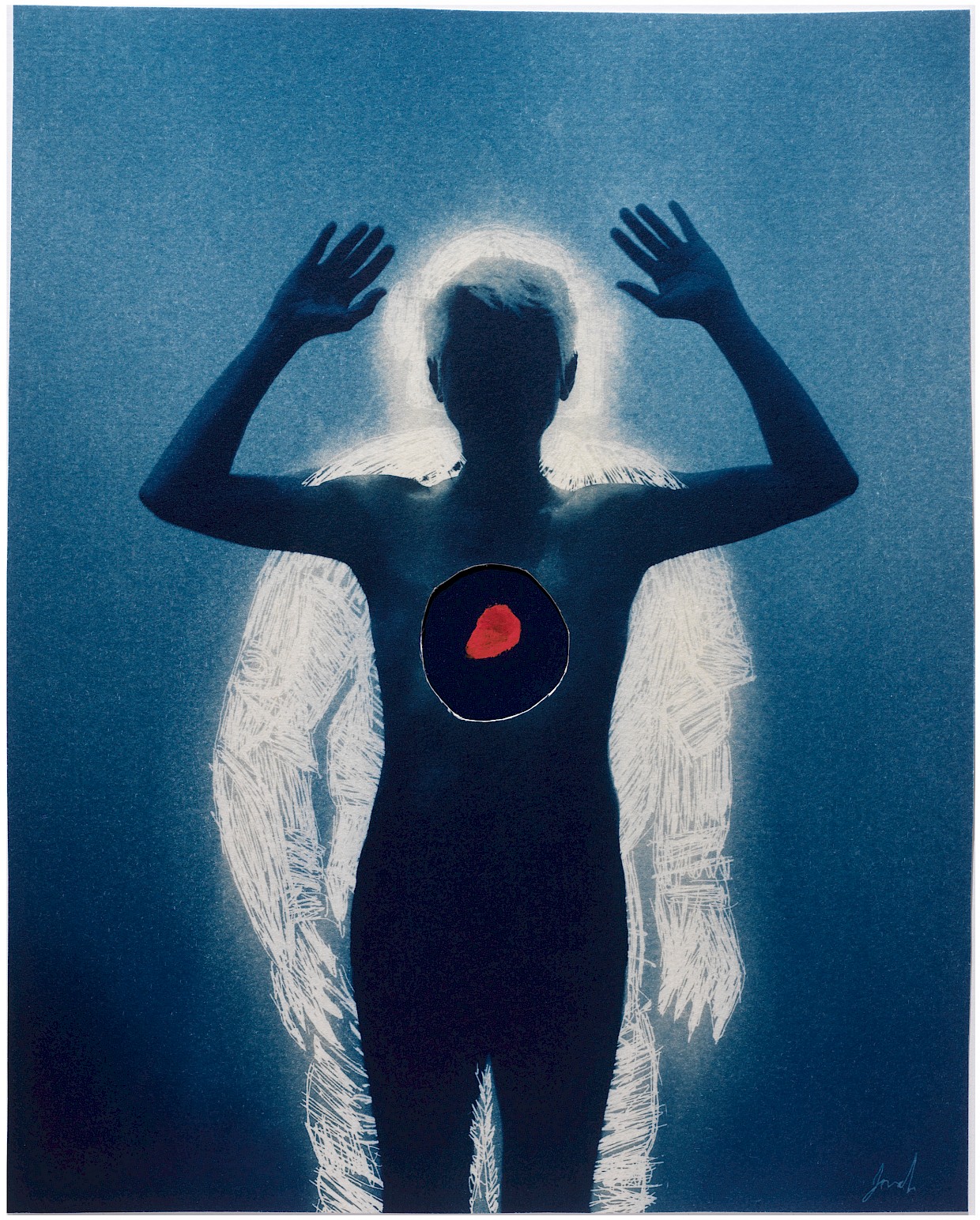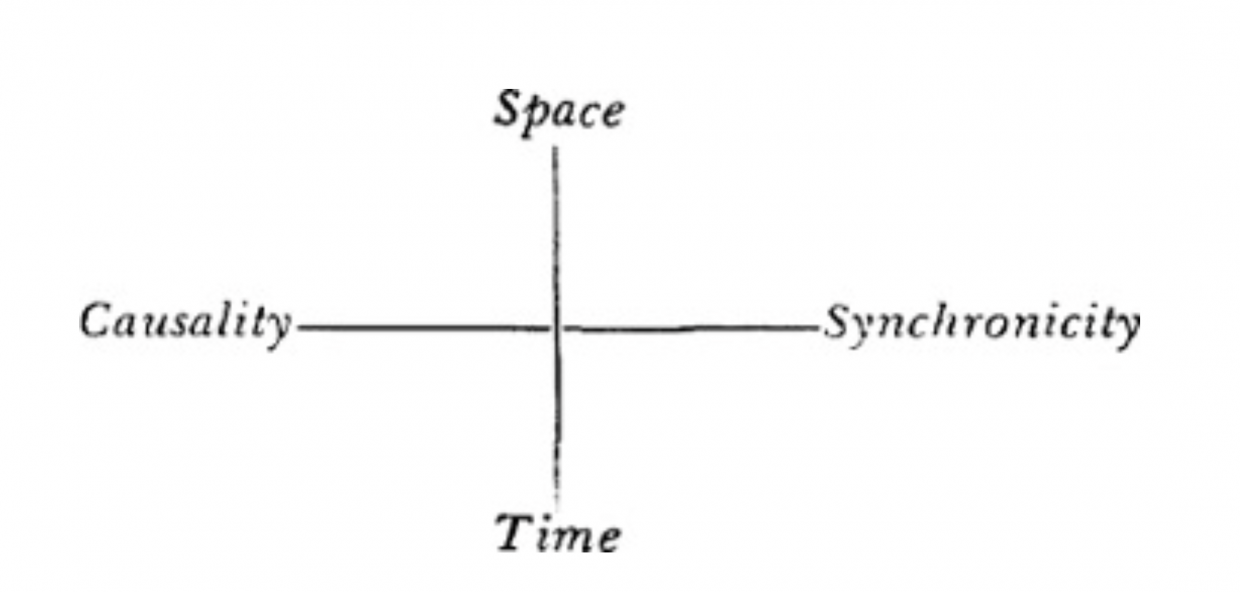Three Rational Reasons to Believe in Synchronicity
Feb 9, 2021 / The Twelve Mysteries / synchronicity / carl jung

Buy a Print
or License image
I have great news to share in this blog post!
The image above won the GRAND PRIZE in the New York Center for Photographic Art (NYC4PA) competition!
You won’t believe it, but I was not going to submit to this competition. Thanks to synchronicity, I ended up submitting right at the deadline!
Have you experienced synchronicities (“meaningful coincidences”) but ignored them because it’s too irrational and out there? Then you’re a synchronicity skeptic! For many years, I was skeptical of Jung’s idea too. But what if there are rational ways to justify the belief in synchronicity? You might be amazed at how mysterious your life is!
In this article, I write about three reasons based on reading Jung’s book, Synchronicity—An Acausal Connecting Principle (affiliate link). Jung first used the term “synchronicity” in a 1930 lecture, but in this 1952 book, he put it all down and justified it for potential critics and cynics like you and me.
Here are three rational reasons I thought of while reading the book:
- If an Idea is Useful, Why Not Use It?
- Rationality & Science Are Incomplete Models of Reality
- Synchronicity Is Creative Play
All quotes below come from Jung’s synchronicity book. I highly recommend it if you are curious. When Jung was in his twenties, he experienced phenomena that couldn’t be explained by chance groupings or “runs” where things happen all together or one after the other. Such “runs” can be explained by the law of seriality, an “expression of inertia,” an idea that Jung learned from Kammerer. Subjectively, there comes a point where a coincidence cannot be ignored. For example, one of Jung’s patients dreamed about receiving a gift of a golden scarab. Just as she recounted the dream to Jung during therapy, a beetle appeared at the window. Jung opened the window and said, “Here is the scarab in your dream.” The unconnected events of the dream and the beetle appearing at the window made such an impression on the patient that it helped her deal with her problem. This experience and other coincidences prompted Jung to formulate the concept of synchronicity. Take my Grand Prize image, for example (I still can’t believe it happened!). I initially saw the call in December 2020. At the time, I decided against submitting because my old-fashioned cyanotype artwork did not seem to fit the modern imagery that the competition was looking for (I was wrong!). Early January, I saw this call for entry again and ignored it because I already decided not to enter. Finally, on January 17, I saw the call for entry again, with several hours remaining to the deadline! “Okay, I’ve seen this call at least three times already. Why is that happening?” I said to myself. Whenever something strange like this happens, stop and think: why is this happening now? Rationally, I could have ignored these repetitions. But having experienced synchronicities in the past, I’m now more sensitive to these events. So, I stopped what I was doing that Sunday afternoon and submitted to the competition! I wouldn’t have the chance to win had I ignored the serial repetition and synchronicity. If an idea works, why not use it? As demonstrated in Jung’s therapeutic example and my story, paying attention to synchronicity works. This doesn’t mean that you and I will win competitions, although that would be nice but unrealistic! If synchronicity puts you in the game, well, that’s good, no matter the outcome! Provided the belief does not hurt other people, why not use it? My first rational reason for believing in synchronicity is about practicality. The practicality argument doesn’t directly address rationality. So let’s do that with the next reason. According to Carl Jung, the modern world results from powerful tools like statistics and the scientific method. These fantastic tools produced airplanes, the internet, and space flight (my examples). Science developed a COVID vaccine in months! Isn’t that amazing? I’m an accountant by training, so I’m all for rationality, objectivity, and science. However, as Jung puts it, the “statistical view of the world is a mere abstraction and therefore incomplete and even fallacious, particularly so when it deals with man’s psychology.” Jung then says, “the statistical method is in general highly unsuited to do justice to unusual events,” like synchronicity. We are blind to many things we don’t know. Just because we know a lot does not mean we know everything. This is so obvious, but most people forget this. Science deals with the physical, like the pesky COVID virus, but what of psychological and inner events? Until science covers those areas, we are in the dark when it comes to human experiences like synchronicity, spirituality, and faith, among many other things. The world’s bias for rationality and science—treating the psychological experience as unimportant—is unfortunate but understandable. Who would fund such research? Unfortunately, it comes down to money. Also, It’s easier to deal with external rather than internal experiences. The former lends itself to experiments with a clear hypothesis and findings. As a result, we are in a “wasteland,” as Joseph Campbell would say. No one has experimented with inner experience on large and verifiable studies to begin to understand phenomena such as synchronicity. Despite the obstacles, what are some rational and scientific approaches to synchronicity just waiting for scientists to prove, disprove, or develop further? Jung cites J.B. Rhine parapsychology card and dice experiments at Duke University to demonstrate a link between ESP and emotion—implying that synchronicity might also be bound to the person’s emotional situation. As Jung showed in his patient’s dream of the golden scarab, synchronicity appears when the person is stuck in an “impossibility.” He notes further: “archetypal dreams are likely to occur which point out a possible line of advance one would never have thought of oneself.” Could synchronicity be tied to the emotional states of the person experiencing it? This question waits for scientists to experiment with. Until science looks into this possible linkage, what do we do in the meantime? Just because we don’t know the answer does not mean it doesn’t exist. Jung builds his synchronicity argument by utilizing statistics to analyze another phenomenon: astrology marriage horoscopes. He notes: “no belief in astrology is needed to carry out such an investigation, only the birthdates, an astronomical almanac, and a table of logarithms for working out the horoscope.” Jung relies on statistician Professor Markus Fierz to help calculate probabilities in the collected data set. In examining the computed results, Jung observes: “Although all these figures [representing probabilities of various astrological combinations] lie well within the limits of probability and cannot, therefore be regarded as anything more than chance, their variation, which each time corresponds surprisingly well with the psychic state of the subject, still gives one food for thought…The psychic and physical event (namely, the subject’s problems and choice of horoscope) correspond, it would seem, to the nature of the archetype in the background and could therefore represent a synchronistic phenomenon.” I’m unfamiliar with astrology, so it was hard to follow Jung’s analysis. However, my takeaway from his research is that belief influences the choices you make, affecting the outcome. In other words, it’s not that the horoscopes are “right” or “true,” but that your interest or belief affects the results that you obtain from it. This line of inquiry begs for a science experiment. But again, the question is, what do we do in the meantime? Jung formulated the theory of synchronicity to address the knowledge gaps in science’s view of reality. He melds space, time, causality, and synchronicity. Recently, I attended a Jung Society of Washington DC webinar on synchronicity given by psychologist Michael Jawer. He mentioned the panpsychism theory that may support synchronicity. Panpsychism suggests that consciousness may be a fundamental force pervading the universe, much like gravity. Levels of consciousness may be in all things, from human beings to something like bacteria or maybe even a rock! Matter may not only consist of protons and electrons but also consciousness. This theory is not new; various expressions exist throughout history. Indra’s web in Hindu mythology has this concept, for example. Recent formulations include anima mundi or world soul. Panpsychism suggests that everything is connected. This line of inquiry begs for a science experiment as well. But again, the question is, what do we do in the meantime? A recent study found that trees “communicate” with each other through a network of fungi underneath the ground. If trees are connected through their roots, could something similar exist with other life forms? What “fungi” connects us? This question sparked my imagination. From the examples above, it is clear that we don’t know everything and that rationality and science is an incomplete view of the universe and reality. Science is a great tool, but it’s not fast enough to prove, disprove, and develop every synchronicity theory out there. It’s certainly not fast enough for an individual’s life that only lasts 85 years. So the question is, what do we do in the meantime? My second rational approach to synchronicity is to assume that it is valid until science comes up with a better reality model. If that happens in my lifetime, then great. If not, then at least I had fun using synchronicity! This leads to my last point. Enjoying this article? Subscribe here. A meaningful coincidence can be taken seriously or playfully. Instead of wondering “are synchronicities real,” it’s more fun to play with it: “What is this synchronistic sign telling me? Is it a message?” Perhaps this is the most critical reason to believe in synchronicity: it’s fun to go through life, delighting in potential messages from chance, coincidence, and lucky events. The pandemic has taught me the importance of fun, wonder, and mystery in daily life. Synchronicity does that for me. In retrospect, many synchronistic events shaped my life. I set up a synchronicity tracker that I continually update because it’s so surprising that it happens! Synchronicity is a form of creative play. It’s another name for serendipity. Wouldn’t you want some of that? Count me in! So there you have it. I gave three rational reasons to believe in synchronicity. The first reason is practical: if it works, then why not use it? The second reason is humble: we don’t know everything, science provides an incomplete view of reality. The third reason is fun: synchronicity is creative play. Have I convinced you to believe in synchronicity? If yes, track them all down in a journal! I wrote about journaling before. When synchronicity happens, I write about it in my journal. I suggest you try it. You’ll be amazed at how mysterious your life is! It counteracts a little bit all the pessimism with COVID. So over to you—what is stopping you from believing in synchronicity?If an Idea is Useful, Why Not Use It?
A Personal Synchronicity Example
Rationality & Science Are Incomplete Models of Reality
J.B. Rhine Parapsychology Experiments
Jung Applies Statistics to Astrology

Panpsychism as Support for Synchronicity
Synchronicity Allows Wonder and Mystery in Daily Life
Track Synchronicities in Your Journal



